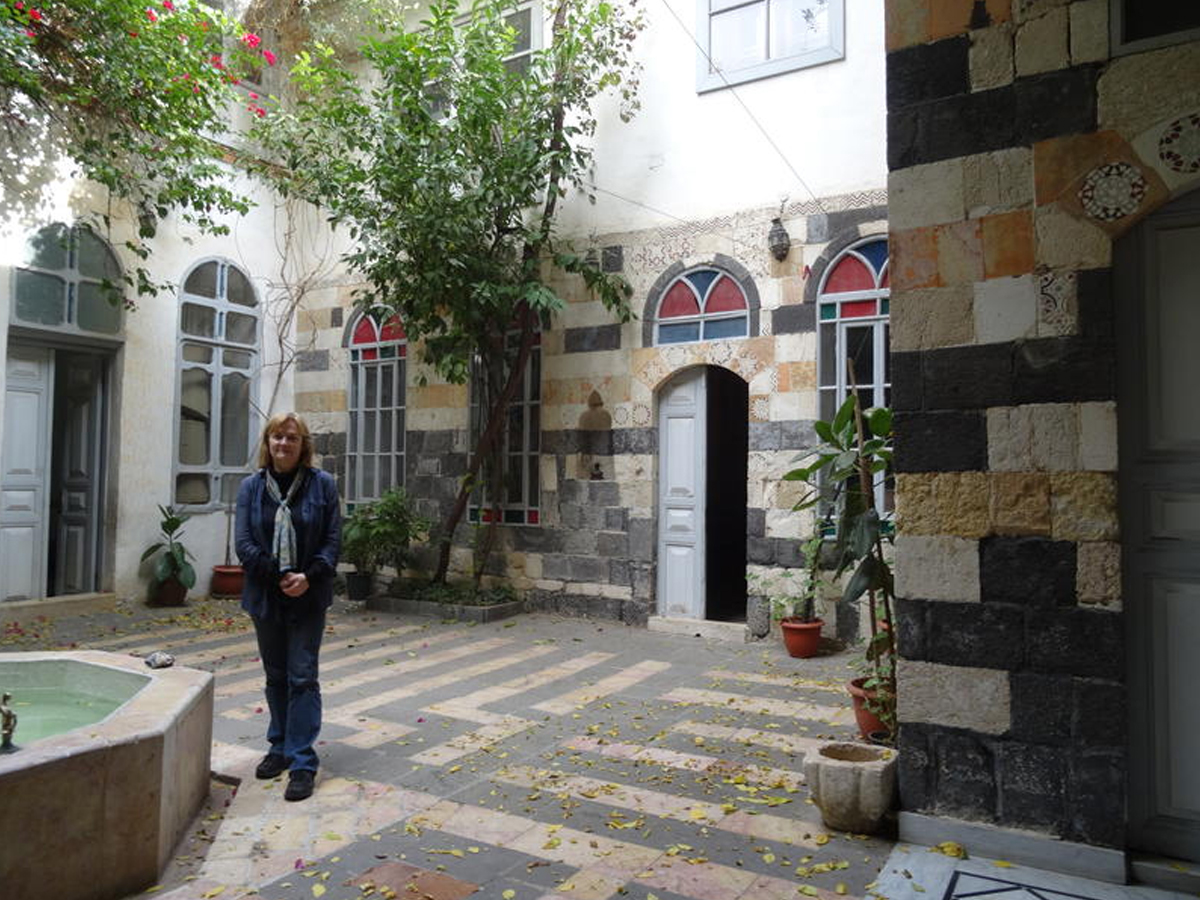Author Diana Darke on life in Damascus, what she loves most about the city & the damage the Syrian war is causing to historical monuments
“This is what I miss most, that sense of living steeped in the depths of history, embraced by it, which all my friends there [in Damascus] still experience every day. The city is so alive, so vibrant, and yet wears its deep culture so lightly. I never feel that in the same way anywhere else.”
Q1/ You lived in Damascus for a number of years, can you tell us how you came to live there?
In 2003 I was commissioned to write the Bradt Guide to Syria, so was making regular research trips round the country. By chance on one of those trips I met a Syrian architect who specialised in restoring Ottoman courtyard houses. He told me it was now possible for foreigners to buy property in Syria, and that many old houses were falling down from neglect. It seemed like the chance of a lifetime to buy and restore a chunk of a UNESCO World Heritage site, so I made several more trips to look for a suitable and affordable house. After viewing about 30, I chose my house, Bait Baroudi, in the Old City of Damascus. It was semi-derelict and took more than three years to restore.
Q2/ What did you find most interesting about living in Damascus, and what do you miss most now that you have left?
What I love most about Damascus is the almost careless way the modern city blends with the Old City, layer upon layer of history interwoven. Because it has been continuously inhabited for thousands of years – arguably for longer than any other city in the world – none of the ancient ruins have been excavated, they just pop up unexpectedly, almost randomly, among the more modern buildings. So after walking along the Ottoman Souk Al-Hamadiye with its bustling shops and ice-cream parlour, you suddenly come upon columns from the Temple of Jupiter in front of what is now the Umayyad Mosque, formerly the Cathedral of St John the Baptist. This is what I miss most, that sense of living steeped in the depths of history, embraced by it, which all my friends there still experience every day. The city is so alive, so vibrant, and yet wears its deep culture so lightly. I never feel that in the same way anywhere else.
Q3/ Can you tell us briefly about your book My House In Damascus, what it covers and the circumstances that led you to write it?
I wrote the first draft of My House in Damascus back in 2010, and submitted it to publishers in March 2011 just days before the Syrian Revolution began. My timing was terrible. Everyone told me, “You can’t write a book like this now.” So I rewrote the story many times, incorporating the revolution, explaining how it evolved and how it lost its way. I wanted to help outsiders who had not had the benefit of my first-hand experience, to understand the many complexities of Syrian society, along with much background about Islamic philosophy, art and architecture. I was determined to explain the country differently, still using the house as the central character, to show how Syria works from the inside. That was always my motivation even before the revolution – afterwards it became even more so.
Q4/ Syria is home to six World Heritage Sites and Damascus has some 125 historical monuments. Can you tell us about any damage you noted to the city/its monuments during your recent visit to Damascus?
Damage in Damascus is mainly limited to the rebellious residential suburbs like Midan in the south and Al-Qaboun in the east. In Jobar just east of the Old City, the ancient synagogue has been destroyed in bombing. Otherwise, random mortar shells sometimes land in the Old City. In November 2013, one hit the mosaics on the courtyard facade of the Umayyad Mosque, and another blew a hole in the citadel – the damage has since been repaired. The Damascus National Museum is closed for its own protection, but other historical monuments like the Azem Palace and the Ananias chapel remain open to visitors and well-tended.
Want to find out more? Join Diana Darke in conversation with Zahed Taj-Eddin at our free talk and book launch event My House in Damascus, 1 April 2015 at The Mosaic Rooms.
